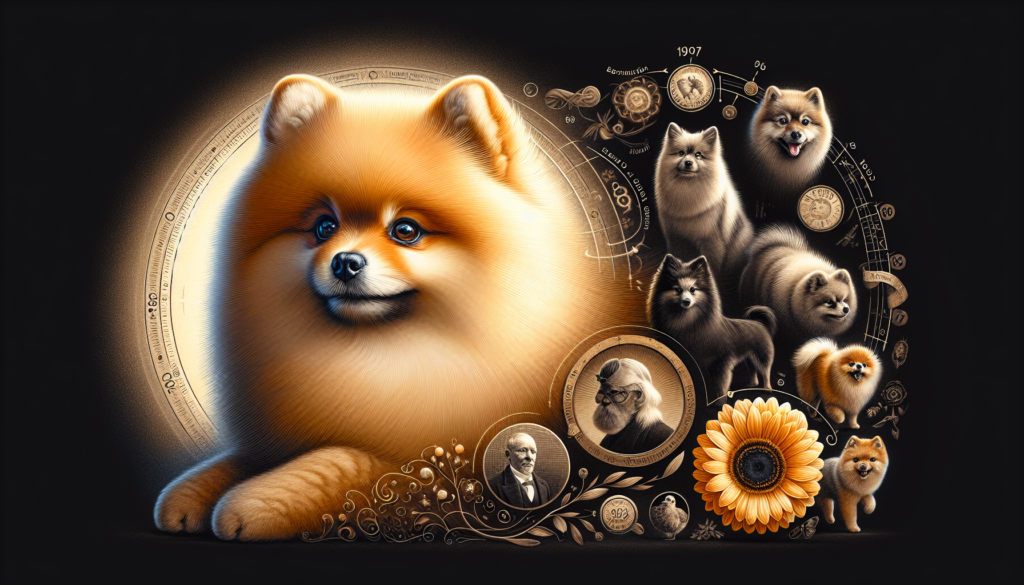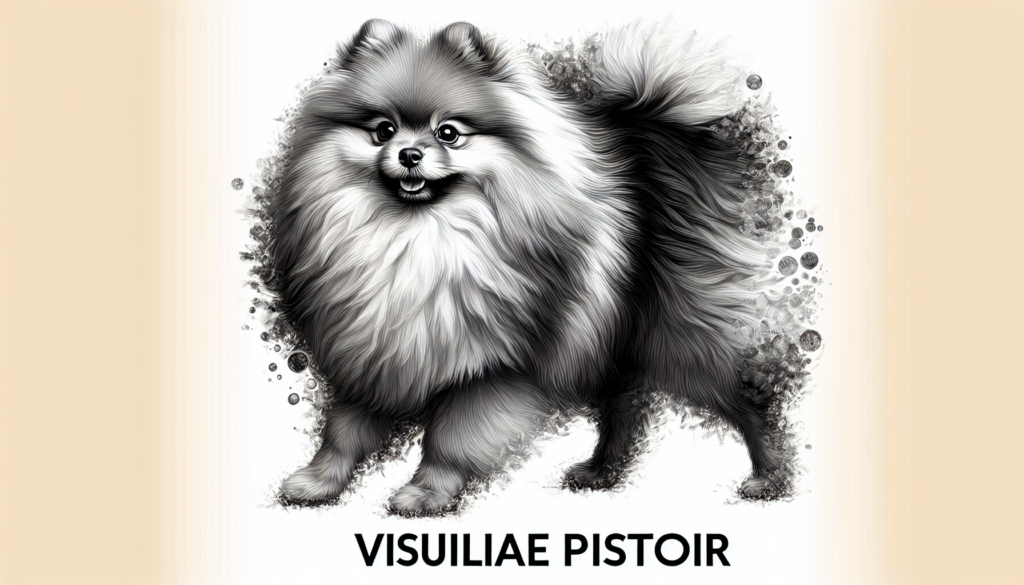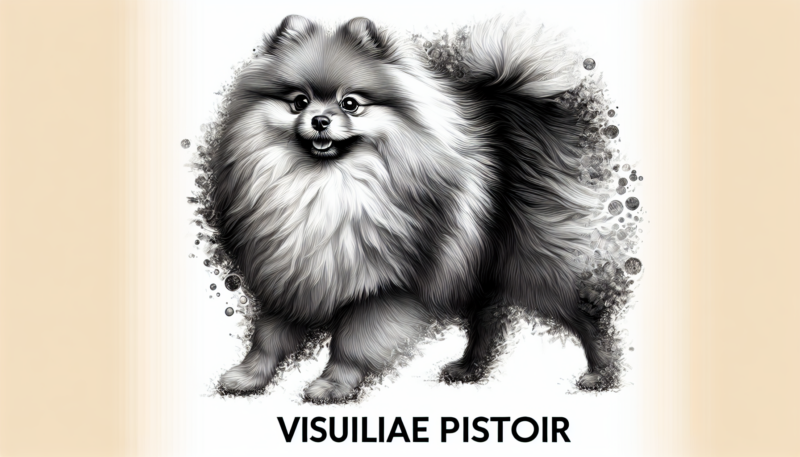Imagine yourself transported back in time to the 18th century, where a captivating tale of the Pomeranian dog breed unfolds. The history of these adorable and vibrant canines is a fascinating one, as they evolved from large sled-pulling dogs to become the cherished companions of royalty and high society. Delve into the intriguing story behind the Pomeranian dog breed and discover the origins of these beloved fluffy companions.
Origin
The adorable and spirited Pomeranian dog breed has a rich and fascinating origin, tracing back to ancient ancestry. It is believed that the Pomeranian’s roots can be found in the regions of Northern Europe, particularly in Pomerania, which is now part of modern-day Germany and Poland.
Ancient Ancestry
The Pomeranian’s lineage can be traced back thousands of years to the ancient Arctic sled dogs. These dogs were highly valued for their strength, endurance, and ability to withstand extremely cold temperatures. Over time, these sled dogs adapted to their surroundings and evolved into the charming and pint-sized Pomeranians we know and love today.
German Origins
As their name suggests, Pomeranians have strong ties to the region of Pomerania, which was once a part of Germany. It is believed that the breed gained popularity in Pomerania during the 18th century, where they were treasured as loyal companions and also served practical purposes.
Historical Records
The Pomeranian’s history can be traced back through various historical records and writings. One notable mention of the breed dates back to the 16th century, when the famous German polymath, scientist, and artist Albrecht Dürer made references to small Spitz-type dogs that closely resemble the Pomeranian.
Pomerania and the Breed
Region of Pomerania
Pomerania, the region from which the Pomeranian breed takes its name, stretches along the southern coast of the Baltic Sea. This picturesque area was renowned for its natural beauty and served as the backdrop for the breed’s evolution and development.
Pomeranian as a Royal Dog
During the 18th century, Pomeranians gained significant popularity among European royalty, especially in Great Britain. The breed was named after the region of Pomerania, where Queen Victoria became particularly fond of these delightful dogs. Her love for the breed helped solidify its status as a royal favorite.
Evolution of the Breed
Over time, the Pomeranian breed underwent significant changes in appearance, size, and temperament. While the original Pomeranians were larger and more working-oriented, the breed gradually became smaller and more suited for companionship. Through selective breeding and careful consideration of desirable traits, the modern-day Pomeranian we know today emerged.

Predecessor Breeds
Spitz-Type Dogs
The Pomeranian shares a common ancestry with other Spitz-type dogs. These dogs are characterized by their thick double coats, erect ears, and curled tails. Spitz-type breeds have existed for centuries and were utilized for various purposes, including herding, guarding, and pulling sleds.
Early Pomeranian Types
In the early days of the breed’s development, Pomeranians varied in size, from larger sled-pulling dogs to smaller working dogs. These early Pomeranian types served a range of purposes and were highly regarded for their versatile skills and loyalty.
Purpose
Working Dogs
Originally, Pomeranians were hardworking dogs, known for their ability to pull sleds and assist with various tasks. Their strength, agility, and endurance made them invaluable working companions, particularly in Arctic and sub-Arctic regions where they thrived.
Companion and Lap Dogs
As times changed and the Pomeranian breed evolved, their purpose shifted towards becoming cherished companion dogs. Due to their small size, friendly nature, and adaptability, Pomeranians became popular as lap dogs, providing their owners with constant companionship and affection.

Appearance
Size and Weight
Pomeranians are a small breed, typically weighing between 3 to 7 pounds (1.4 to 3.2 kilograms) and standing at a height of around 6 to 7 inches (15 to 18 centimeters) at the shoulder. Despite their diminutive size, Pomeranians possess a proud and elegant posture that complements their adorable appearance.
Coat Color and Type
One of the most captivating features of the Pomeranian breed is their luxurious double coat. These dogs sport a thick, fluffy undercoat and a longer, coarser outer coat that comes in a wide range of colors, including orange, black, white, cream, brown, blue, and sable. The variety of coat colors adds to the breed’s appeal and allows for a unique and stunning appearance.
Temperament
Intelligence and Trainability
Pomeranians are highly intelligent dogs that thrive on mental stimulation and training. With proper socialization and positive reinforcement, they can quickly learn commands and tricks. However, it is essential to handle them with patience and consistency, as they can be independent and occasionally stubborn.
Socialization and Adaptability
Pomeranians have a friendly and sociable nature. They tend to form strong bonds with their owners and enjoy being part of a family. While they can be reserved with strangers, early socialization can help them develop into well-rounded dogs that feel comfortable in various social settings.
Alertness and Guarding Instincts
Despite their small size, Pomeranians possess a natural sense of alertness and can make excellent watchdogs. They have a tendency to bark to alert their owners of potential threats or disturbances. Though their protective instincts may be valuable, it is important to manage excessive barking through proper training and redirection.
Notable Pomeranian Owners
Queen Victoria
Queen Victoria of the United Kingdom played a significant role in popularizing the Pomeranian breed. Her love for Pomeranians can be traced back to her trip to Italy, where she fell in love with a small Pomeranian named Marco. Queen Victoria’s passion for the breed led to a surge in its popularity throughout Europe.
Other Royal Connections
Throughout history, Pomeranians have been adored by royalty and nobility. They were favored by many members of European royal families, including Queen Charlotte of the United Kingdom, Marie Antoinette of France, and Empress Joséphine of France. These remarkable dogs became treasured companions within royal households.
Celebrities and Influencers
In more recent times, Pomeranians have become beloved pets of celebrities and social media influencers. Their irresistibly cute appearance and playful personalities have captured the hearts of many famous individuals, including Paris Hilton, Nicole Richie, and Gwen Stefani.
Pomeranian Popularity
Europe and the United States
Pomeranians gained recognition and popularity across Europe and the United States throughout the 19th and 20th centuries. Their charm, intelligence, and adaptability made them ideal companions for people of all ages. Today, they continue to be highly sought after and cherished pets.
Presence in Art and Literature
The Pomeranian breed has left an indelible mark on art and literature throughout history. They have been featured in countless paintings, sculptures, and even in classic works of literature. Pomeranians symbolize elegance, loyalty, and companionship in various artistic mediums.
Development of Breed Standards
Kennel Clubs and Breed Standards
As the popularity of the Pomeranian breed grew, kennel clubs began to develop specific breed standards to ensure uniformity and preserve the breed’s unique qualities. These standards outline the ideal characteristics, including size, appearance, and temperament, that Pomeranians should possess.
Recognition by FCI and AKC
The Pomeranian breed has achieved international recognition and validation by prestigious canine organizations, such as the Fédération Cynologique Internationale (FCI) and the American Kennel Club (AKC). Recognition from these authorities further solidifies the breed’s importance and ensures that desirable traits and breed standards are maintained.
Modern-Day Pomeranians
Health Concerns and Care
Like all dog breeds, Pomeranians can be prone to certain health issues, including dental problems, patellar luxation, heart conditions, and tracheal collapse. Regular veterinary check-ups, a balanced diet, and proper grooming are essential for their overall health and well-being.
Adoption and Breeders
For those considering adding a Pomeranian to their family, various adoption centers and reputable breeders offer these charming dogs. It is crucial to do thorough research and ensure the breeder or adoption center prioritizes the health and welfare of the dogs.
Pomeranians in Competitive Dog Shows
Pomeranians often participate in dog shows, where they showcase their beauty, personality, and adherence to breed standards. These events provide opportunities for breeders, owners, and enthusiasts to appreciate and evaluate Pomeranians’ exceptional qualities.
As you can see, the Pomeranian breed has a captivating history, evolving from working dogs to cherished companions over the centuries. Their small size, stunning appearance, and delightful personalities continue to win the hearts of dog lovers worldwide. Whether as loyal companions or competitive show dogs, Pomeranians have undeniably left their pawprint in history and bring joy and affection to the lives of those who welcome them into their homes.
